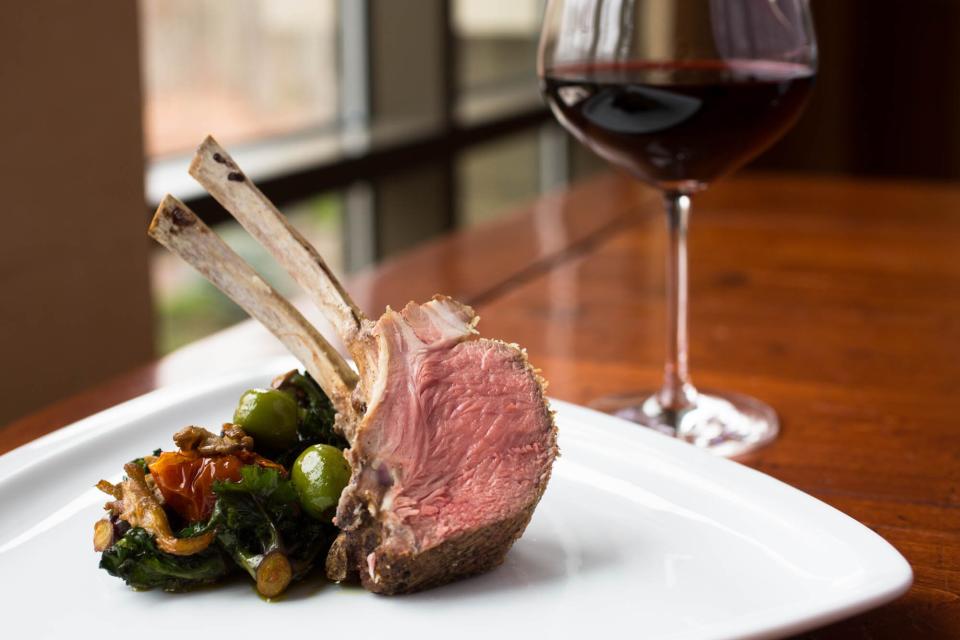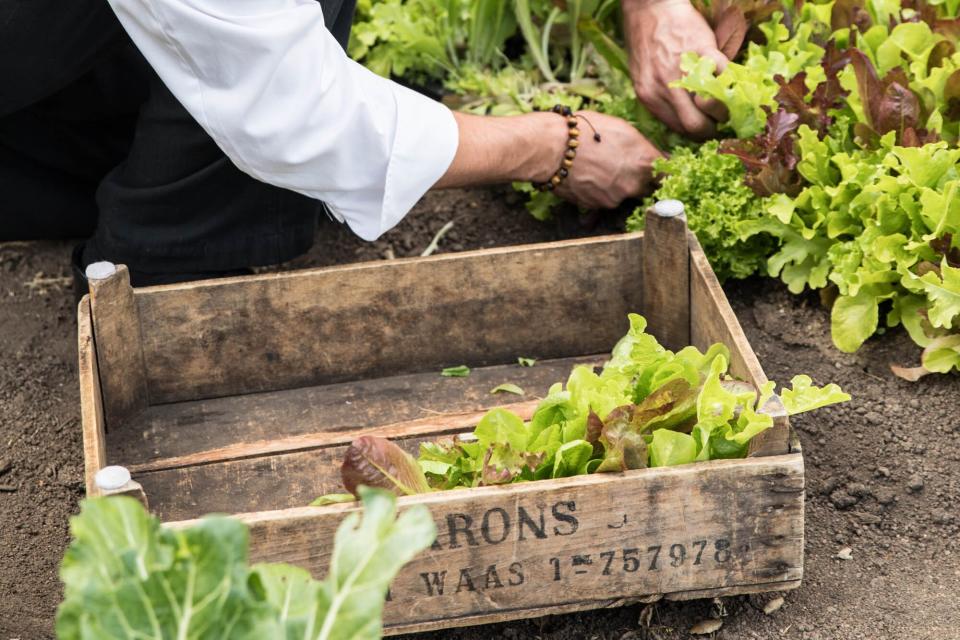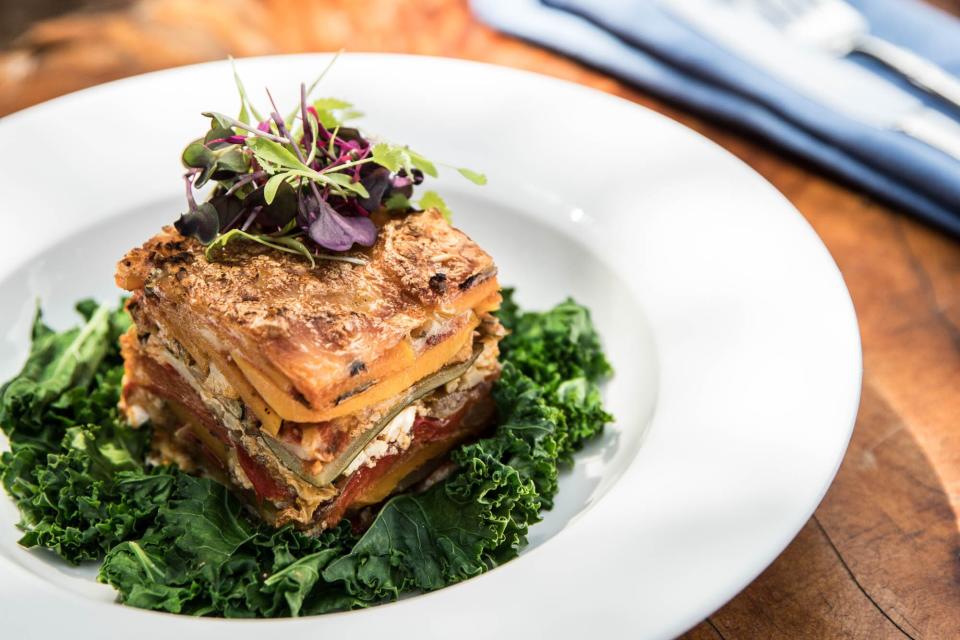Why Spa Food Looks Different in 2021
I was not expecting culinary pyrotechnics when I walked through the doors at Miraval Berkshires for a weekend away. The all-inclusive spa retreat, in Lenox, Massachusetts, boasts a long list of activities, from sound healing to rigorous ropes obstacle courses, allset to the backdrop of 380 acres of woodland designed by Frederick Law Olmsted. The resort, I thought, was meant to address my spiritual wellness more than my taste buds. Like many wellness-focused brands, Miraval (there are also properties in Austin, Texas and Tucson, Arizona) has an ethos: "The Miraval journey is about creating a life in balance, healing the whole self, and engaging in the present moment," reads part of the published philosophy.
But Miraval—and its wellness resort counterparts—is growing into the intertwined understanding of health and dining. Menus during my stay included grass-fed beef hamburgers, buttery mushroom "risotto" made from ancient grains, and pocket-sized chocolate croissants (I ate handfuls). A new tenet of certain wellness philosophies is one that sees food as pleasure, and that views, as its guiding principle, where this food comes from and how it is grown.

Andrea Killam Photography / Courtesy of The Lodge at Woodloch
"The pillars of our food and beverage experience are still based in responsibility, seasonality, and mindfulness," says Ben Baker, the Executive Chef of Miraval Austin. But, he stresses, "we don't avoid any particular ingredients here." The concept integrates whole eating with a dedication to environmental practice. More broadly, Miraval's properties offer separate, changing menus that track the seasons and that, Baker says, "highlight the diverse and indigenous ingredients that define each region" while "reducing food miles" by focusing on locally grown and raised foods. "The apiary, chicken-keeping and agrarian experiences were programs we developed as our views of healthy eating evolved," he says. "Sustainable farming practices became a larger part of our overall vision."

Courtesy of Canyon Ranch Fire-roasted carrots at Canyon Ranch.
Conceptually, spa dining appears to be shifting away from permission-based eating (is it ok to eat this?) to provenance-based eating. At The Lodge at Woodloch, an all-inclusive destination spa in Hawley, Pennsylvania that opened in 2006, a farm-to-table ideology is baked into the experience. The resort, says Josh Tomson, Executive Chef at The Lodge's Tree Restaurant & Bar, "marries the best food with enlightened healthy techniques, creating a new kind of spa cuisine." Recent dinner entrées—a prime 10-ounce New York strip with potato poutine and black truffle cheese curds, root vegetable-crusted diver scallops with Parmesan polenta and a Tasso ham-Sherry cream sauce—drive this ethos home.
The spa focuses, specifically, Tomson says, on "utilizing fresh, local, and organic produce," naturally raised proteins, and whole foods "in a sustainable way." The property's Blackmore Farm, where guests can partake in culinary experiences like cooking, baking, and beekeeping, also composts for three resorts and a handful of local restaurants. The result, he says, is a reduction of landfill waste and "an amazing sustainable component to our own farm's healthy and fertile soil."
This emphasis on sustainability is an evolution in terms of how spas position their dining programs now in relation to how they have traditionally done so. Understanding modern spa dining requires an understanding, too, of the culture in which it flourished. In the 1960s and 70s, Tomson says, spas were defined by "calorie counts and deprivation." Once considered the weekend dalliance of the rich and thin—the wealthy were known to decamp to a spa with the express goal of shedding a few pounds in the company of very lean cuisine—this type of dedicated vacation began to evolve in the early 2000s. Luxury food items, like lobster and caviar, started supplanting lettuce. The idea was that you could still be conscious and dine in luxury, so long as you controlled your portions.

Rhiannon Taylor / Courtesy of Golden Door Spa
I saw no caviar on any of my Miraval menus, and that's because the newest interpretation of wellness emphasizes a clear understanding of what we're eating over how much we're eating. Moderation, of course, continues to creep into conversations about culinary health at wellness retreats, and the portions are smaller than one might find in an actual restaurant. But there's no limit as to how much food you can order, a distinct departure from the traditional philosophy espoused by weight loss-centric spas.
"We're not like a boot camp," says Shayne Spradlin, Executive Chef at Canyon Ranch, a four-property spa retreat brand that opened in 1979. Guests should feel free to have "an extra steak with dinner" if they want. "They're welcome to have it. It's just giving them the tools so that they know what we recommend and what a healthy lifestyle actually is." What this means, in terms of food philosophy, is an increase in vegan and vegetarian offerings (a recent menu included sunflower seed tacos, a raw dish made with cumin and chili and served with pickled cabbage, onion, and avocado), as well as a move away from large protein portions and refined sugars. Spradlin, who has been with Canyon Ranch for 16 years, defines education as an important aspect of spa dining, and that education filters down into hands-on cooking classes with topics like fermentation.

Rhiannon Taylor / Courtesy of Golden Door Spa
Alcohol, too, is suddenly a part of the conversation. "If they enjoy alcohol, desserts, and pastries, they can definitely still enjoy them at Miraval," Ben Baker says of the property's guests. Miraval offers a slim bar and wine and cocktails at lunch and dinner. The Lodge at Woodloch also includes alcohol for guests at meals. Even Canyon Ranch is not a dry resort, although alcohol is limited to rooms and special events.
At Golden Door Spa & Resort, which opened in 1958 in San Marcos, California, Executive Chef Greg Frey, Jr. says that a mind shift is taking place within the industry. His own spa's food, he says, was focused, over the past two decades, on "calorie-counting," but that idea of limitation has since been abandoned. "We are about 'yes,'" he says. "Enjoying wonderful, healthy meals that not only provide sustenance, but also energy for the mind, body, and soul." The spa's 200-plus acres of agriculture, and two dedicated acres of gardens, provide fresh produce for the property's restaurant. Food at Golden Door, Frey says, is "meant to be a celebration."
This notion of celebration, in fact, feels central to 2021 spa dining as a whole: a celebration of how food arrives from field to plate, a celebration of growers and purveyors, a celebration of the possibility of food, and, above all, a celebration of the idea that food is meant to taste good. "It simply cannot be an all-or-nothing mentality, or it will throw off the equilibrium that is needed in sustainable farming," says Derreck Braun, Farmicist at Blackmore Farm. "There is a reason that a good portion of the world's population still worships the cow."

